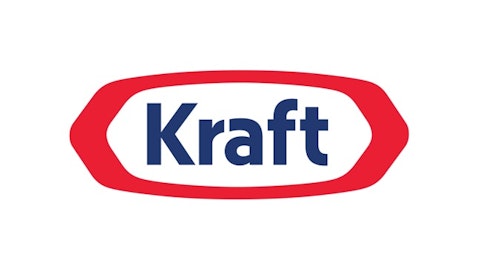On April 8, General Electric Company (NYSE:GE) announced the acquisition of Lufkin Industries, Inc. (NASDAQ:LUFK) Lufkin Industries, Inc. (NASDAQ:LUFK) is a provider of artificial lift technologies for the oil and gas industry and a manufacturer of industrial gears. The deal was sealed at $3.3 billion which represents a FY2013 x13.5 EBITDA. According to General Electric, the artificial lift technology is used in 94% of the one million oil-producing wells around the well helping lifting hydrocarbons in low pressure wells. The global artificial lift sector is expected to reach $13 billion in 2013 (according to Spears & Associates). Let’s see some of the positive and negative characteristics this deal will have on General Electric.

It Will Increase General Electric’s Market Share in the Artificial Lift Segment
This deal is in line with General Electric Company (NYSE:GE)’s M&A strategy of deals between one and four billion focused on the oil & gas sector. Lufkin is a global leader in the artificial lift industry with a market share of 31% in the rod lift sector and 46% of the electric submersible pump (ESP). This deal will boost General Electric’s market share of 5% of the artificial lift market to 15% after the deal. Although the price paid seems a bit expensive compared to other industrial transactions, the premium is due to Lufkin’s competitive advantages and solid market share position.
After the deal General Electric Company (NYSE:GE) can compete with Weatherford International Ltd (NYSE:WFT) which currently holds 24% of the artificial lift market share. It could also benefit from Weatherford International Ltd (NYSE:WFT)’s situation in the past two years, which included issues with tax accounting, increasing debt, no free cash flow generation and credibility issues. The company has spent more than $125 million in the Foreign Corrupt Practices Act issue on probes linked to reports of violations regarding exports and bribery in Europe, Iraq and West Africa.
Lufkin Positive Aspects
Lufkin has had a very impressive growth rate. It increased revenues in 2012 to $1.3 billion, a 37% increase from the previous year. Also, it has increased net earnings to $81.9 million with a 24% increase from 2011. This is reflected on its share price, which has gained an outstanding 163.8% in the last five years. Investors should consider that some of this growth was given by acquisitions. Lufkin acquired thee companies in 2012. Two of them: Datac Instrumentation and Realflex Technologies provided Lufkin with state-of-the-art software and well management systems.
Its strategy is focused on extending its global reach: with new markets being addressed such as the new manufacturing and aftermarket facility in Ploiest, Romania or other platforms including Eastern Europe, Middle East, North Africa and Latin America, specifically Colombia and Argentina.
The company has also developed new US service centers (Bakken and Eagle Ford) as shale plays in US are gaining momentum and expanded its product portfolio with the aforementioned acquisitions in 2012.
What Could Be the Risks for General Electric?
The risks General Electric faces with this acquisition are related to Lufkin’s risks. The main one being a possible decline in US and world oil and gas drilling. The company’s oil segment accounted for 84% 2012’s revenue. Another factor of risk is given by the possible fluctuation of oil and gas prices that could reduce capital spending of Lufkin’s clients.
The price of raw materials is another risk factor. Lufkin uses large amounts of steel and iron to manufacture its products. An increase in the price of these raw materials could heavily impact the company. If Lufkin is unable to pass these prices to customers, its margins and cash flow could be adversely affected.
Lufkin Industries, Inc. (NASDAQ:LUFK)’s main US manufacturing facilities are unionized, and the collective bargaining agreement of those facilities will expire in October 2014. This could lead to labor disputes post agreement expiration.
Final Comment
This deal is a good opportunity for General Electric. Although it is expensive compared to other industrial transactions, General Electric Company (NYSE:GE)’s management is focusing on this segment because they believe new technologies in the oil & gas industry could lead to cheaper energy in North America, with a profound impact in the American economy.
This is in line with the growth in General Electric Company (NYSE:GE)’s Oil & Gas segment, which has increased revenue by 12% from 2011. Synergies could be found in the acquirer’s global scale and insightful service offerings, reaching customers across geographies quickly and efficiently. Also, Lufkin’s product collection could blend with General Electric’s current product offering: gears and bearings can go together with the conglomerate’s existing product line (they are currently in use on General Electric Company (NYSE:GE)’s compressors and gas turbines).
Damian Illia has no position in any stocks mentioned. The Motley Fool owns shares of General Electric Company.

